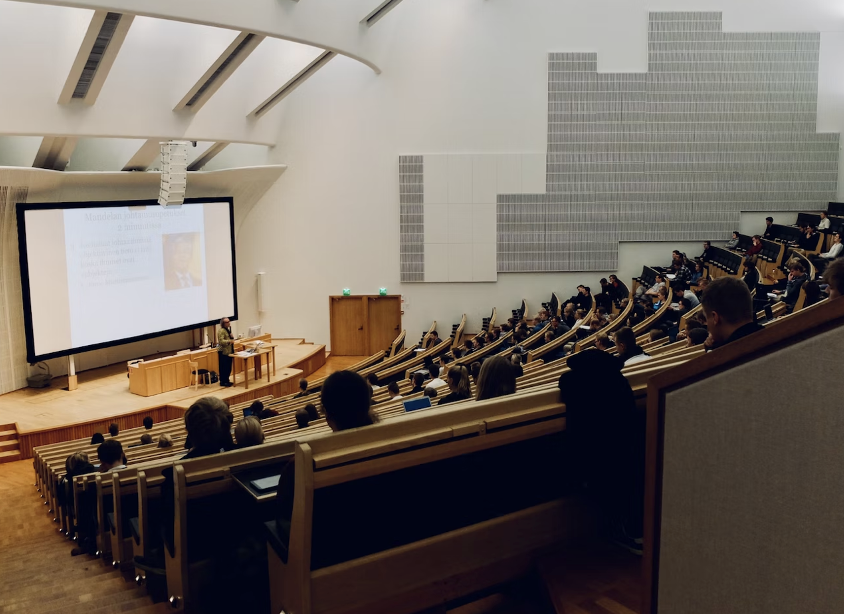By: Madeline Olds, Staff Writer

The Supreme Court has set February 28th as the date to hear two cases challenging the legality of President Joe Biden’s student debt relief program.[1] Biden’s debt relief program is one of the largest federal moves to help with student debt. However, it is unclear whether the debt relief program will survive the conservative Supreme Court. [2]
The average student loan debt in the United States was $37,574 in 2021.[3] For private student loan debt, the debt averages $54, 921 per borrower.[4] There are a total of over 45.3 million borrowers—92% of those borrowers have federal loan debt.[5] Historically, the average student loan debt has increased every year since 2007.[6] In Pennsylvania alone, the average student loan debt is $35, 695, with an $161 increase from 2021-2022.[7]
Biden’s student loan debt relief program is a three-part program to help working and middle-class federal student loan borrowers transition back to regular payment.[8] This program includes up to $20,000 in loan forgiveness.[9] The first part of the plan is a final extension of the student loan repayment pause.[10] This is done to ensure a smooth transition to repayment and prevent unnecessary defaults following the pandemic. The second part is providing targeted debt relief to low and middle income families.[11] This is done by having the Department of Education provide up to $20,000 in debt relief to Pell Grant recipients and up to $10,000 in debt relief to non-Pell Grant recipients.[12] Borrowers are eligible to the relief if the individual income is less that $125,000 for individuals and $250,000 for households.[13] If an individual works for a public service organization or nonprofit, they may also apply for the Public Service Loan Forgiveness Program.[14] Finally, the third part is to make the student loan system more manageable for current and future borrowers.[15] The administration is proposing a rule to create a new income-driven repayment plan that will substantially reduce future monthly payments for lower-and-middle income borrowers.[16]
When Biden proposed this plan, many voiced their opinions on whether this is the proper route to go with the rising student loan debt.[17] Surveys show that there is a majority support but not overwhelming, with it being a 52% to 50% majority.[18] However, the largest complaints came in legal challenges.
The first case, Biden v. Nebraska, is brought by Nebraska, Missouri, Arkansas, Iowa, Kansas, and South Carolina and was filed in the Eastern Missouri U.S. District Court. Nebraska argues that the Secretary of Education exceeds its authority and whether the states have Article III standing to challenge the Secretary’s actions.[19] The district court dismissed for lack of standing and denied the state’s motion for an injunction pending appeal.[20] The Eighth Circuit granted a nationwide injunction pending appeal, and found that Missouri had standing based on the harm that would be suffered by the Missouri Higher Education Loan Authority.[21] Finding standing, the Eighth Circuit held that the merits “involve a substantial question of law which remains to be resolved” and that the case favors injunction considering the irreversible impact.[22] The Biden Administration appealed to the Supreme Court.[23]
The second case, Department of Education v. Brown, is brought by two student loan borrowers, Myra Brown and Alexander Taylor, who allege they were improperly denied the opportunity to comment on the plan and if they had the opportunity to comment, they would have urged a broader eligibility criterion to provide greater debt relief.[24] Both Brown and Taylor were ineligible for relief and brought suit in the Northern District of Texas.[25] The Northern District dismissed the claim based on the HEROES Act exemption. However, the program was vacated nationally, but separately held that the debt relief plan exceeds the Secretary of Education’s authority.[26] On appeal, the Fifth Circuit Court of Appeals denied the request to pause the order pending appeal. The Biden Administration then appealed to the Supreme Court. [27]
Responses to challenge the policy are due to the Court on January 27th with reply briefs due on February 15th.[28] This will be one of the most looked at cases to come from the Supreme Court, as it has a large impact on many Americans. It will be interesting to see whether the more conservative Court will side with the Biden Administration or with the states.
[1] https://www.politico.com/news/2022/12/19/scotus-date-arguments-student-debt-relief-00074552
[2] Id.
[3] https://educationdata.org/average-student-loan-debt#:~:text=The%20average%20student%20loan%20debt,debt%20averages%20%2454%2C921%20per%20borrower.
[4] Id.
[5] Id.
[6] Id.
[7] Id.
[8] https://studentaid.gov/debt-relief-announcement
[9] Id.
[10] Id.
[11] Id.
[12] Id.
[13] https://studentaid.gov/debt-relief-announcement
[14] Id.
[15] Id.
[16] Id.
[17] https://www.brookings.edu/blog/fixgov/2022/09/06/do-americans-support-president-bidens-student-loan-plan/
[18] Id.
[19] https://www.naag.org/attorney-general-journal/supreme-court-report-biden-v-nebraska-22-506/
[20] Id.
[21] Id.
[22] Id.
[23] Id.
[24] https://ballotpedia.org/Department_of_Education_v._Brown
[25] Id.
[26] Id.
[27] Id.
[28] https://www.politico.com/news/2022/12/19/scotus-date-arguments-student-debt-relief-00074552